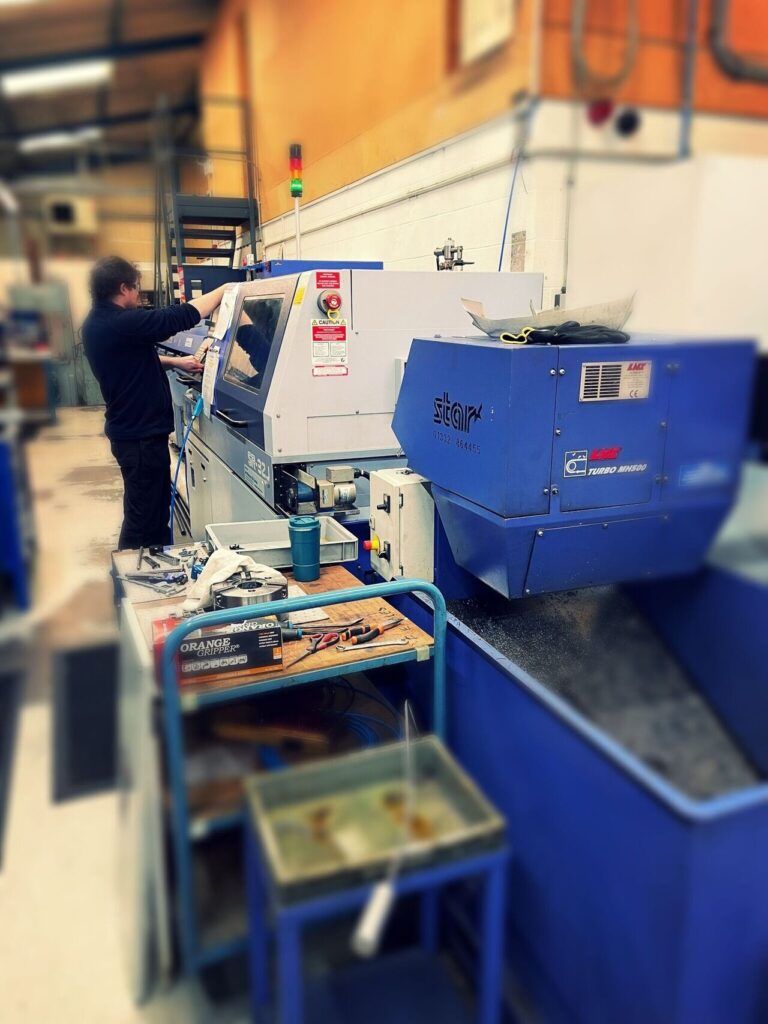In the world of engineering and manufacturing, one of the most important decisions made at the early stages of any project is material selection. When it comes to choosing between metals and plastics, the right answer depends on a variety of factors including function, environment, cost, and durability.
At Sotek Engineering, we work closely with clients across sectors to specify and machine the best material for the job – and in this blog, we’re breaking down the key considerations that can help guide your decision.
1. Strength and Durability
Metals (such as aluminium, steel, brass, and titanium) are known for their high tensile strength, excellent load-bearing capacity, and overall durability. They are ideal for structural parts, high-performance components, and applications where the material will be exposed to heavy wear or stress.
Plastics, while generally not as strong, offer adequate strength for many applications – particularly engineering-grade polymers like nylon, PEEK, or Delrin. Plastics can be surprisingly durable in the right context, particularly where weight and corrosion resistance matter more than sheer strength.
✅ Choose metal for: mechanical components, structural parts, heavy-duty performance
✅ Choose plastic for: lightweight assemblies, non-load-bearing components, or where chemical resistance is required
2. Weight
One of the biggest advantages plastics hold over metals is weight. Plastics can be up to six times lighter than metals, which makes them highly desirable in industries such as aerospace, automotive, and medical where reducing weight can lead to improved performance and efficiency.
✅ Winner on weight: Plastics
3. Corrosion Resistance
Many metals, particularly untreated steel or iron, are susceptible to corrosion, especially in moist or chemically harsh environments. While certain metals like stainless steel or aluminium offer resistance, plastics are inherently corrosion-proof, making them a strong candidate for components exposed to chemicals, water, or salt.
✅ Choose plastic for: marine components, lab equipment, water-handling parts
✅ Choose corrosion-resistant metals for: high-load applications in corrosive environments
4. Machinability and Manufacturing
Both materials can be machined to precision, and Sotek Engineering offers expert CNC machining for both metal and plastic parts. However, plastics are generally easier and faster to machine, reducing cycle times and wear on tools. They can also be more forgiving of complex geometries.
Metals, while more robust, often require more time and care in machining – but can deliver higher-performance results where needed.
✅ Winner for fast machining & prototyping: Plastics
✅ Winner for high-performance parts: Metals
5. Cost Considerations
In many cases, plastics can offer cost savings due to:
- Lower material cost (depending on type)
- Faster machining times
- Lighter weight = lower transport costs
However, it’s worth noting that engineering-grade plastics can be expensive, and metal parts may offer better long-term value in high-wear environments due to their longevity.
✅ Best for budget-sensitive projects: Plastics (in the right context)
✅ Best for long-term investment: Metals (for high-load or high-wear use)
6. Environmental and Regulatory Factors
Both plastics and metals have environmental considerations:
- Metals are generally more recyclable, and metalworking processes can be optimised for sustainability.
- Plastics may raise environmental concerns, but advances in bioplastics and recyclable polymers are helping to close the gap.
Additionally, regulatory requirements (e.g. in medical or food-grade applications) may favour one material over another – we can help guide you through this based on your sector.
Conclusion: Which Should You Choose?
There’s no one-size-fits-all answer. The right material depends on the unique functional, commercial, and regulatory needs of your project. Often, a combination of metal and plastic components provides the best solution.
At Sotek Engineering, our team is on hand to advise on material selection, design for manufacture, and efficient CNC machining of both metal and plastic parts. Whether you’re in the early design phase or ready to move into production, we’re here to help.

